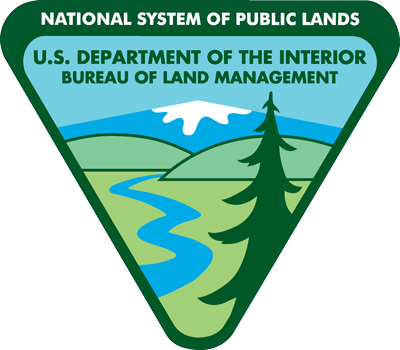Historic Umtanum Suspension Bridge Wins International Footbridge Award (Photo)
- 11/25/25
PORTLAND, Ore. – A century-old-plus suspension bridge that links visitors to the rugged beauty of Washington’s Yakima River Canyon has earned international recognition. The Umtanum Suspension Bridge Rehabilitation Project, led by the Bureau of Land Management (BLM) with design and engineering support from HDR, was recently named the winner in the New Life category of the 2025 Footbridge Awards in Chur, Switzerland.
Organized and sponsored by Bridge Design & Engineering Magazine, this year’s awards were among the most competitive in the program’s history, with a record number of entries worldwide. For the BLM, the honor underscores the importance of preserving historic features while showing how innovative and creative partnerships can deliver safe, sustainable recreation opportunities.
“Public lands belong to everyone, and access is key to connecting people with these landscapes,” said Stephen Small, Spokane BLM District Manager. “The Umtanum Bridge safeguards a piece of history while ensuring that more than 100,000 annual visitors can safely hike, fish, and explore this special area. Receiving this award is a proud moment for the BLM and a reflection of what’s possible through collaboration with skilled partners like HDR.”
A bridge between people and place
Spanning Washington’s only Blue-Ribbon trout stream, the 220-foot (67-meter) clear-span suspension bridge has long been both a landmark and a lifeline. Built around 1925, it once carried vehicles across the Yakima River and Northern Pacific railroad tracks to reach homesteads in Umtanum Creek Canyon – many tied to the railroad that still parallels the river. At one time, the bridge even carried Model Ts.
Though several similar suspension bridges once crossed the canyon, Umtanum is the only one that remains. Converted to foot traffic in the mid-1980s, it now connects the BLM’s Umtanum Recreation Area to canyon trails, public lands, and the Washington Department of Fish and Wildlife’s Wenas Wildlife Area. It is also the only access point to the west side of the Yakima River along the entire 27-mile canyon, linking visitors to routes like the 8-mile Umtanum Creek Trail and the Skyline Trail from Ellensburg to Selah.
With more than 100,000 annual visitors, Umtanum is one of the BLM’s busiest recreation sites in Washington. In 2024, the agency expanded the site by acquiring 650 acres of private land, adding riparian and upland habitat as well as more space for public enjoyment.
Innovation meets stewardship
By the 2010s, years of wear and storm damage had left the bridge in poor condition. To restore its role as a safe and welcoming landmark, the BLM partnered with HDR on a rehabilitation plan that honored the bridge’s character, protected the river below, and strengthened the crossing for long-term use.
With no original design plans available, HDR engineers relied on rope-and-ladder inspections, detailed surveys, and advanced modeling to assess performance. Their design replaced deteriorated parts with durable, low-impact materials while retaining as much of the historic structure as possible.
BLM employees Thane Syverson, then Spokane District Engineer (now Idaho State Engineer), and Diane Priebe, then Wenatchee Field Office Recreation Planner (now retired), guided the project from planning through rehabilitation. Their leadership ensured the work respected the site’s historic and environmental values while addressing safety and durability.
Construction, completed in July 2021, overcame pandemic-era supply chain disruptions through resourceful substitutions, all while staying on schedule and within the $800,000 budget. The result is a sturdier deck, improved railing, and a bridge ready to serve the community for generations – all delivered with minimal environmental disturbance.
“This was an excellent opportunity to leverage our expertise and leverage innovative tools to identify creative and sustainable approaches that would breathe new life into a historic bridge in a beautiful setting,” said Michael Roberts, HDR project engineer. “The BLM challenged us to identify and develop a solution that was reliable, environmentally responsible, and faithful to the bridge’s heritage. We’re incredibly excited to see the project be recognized on the world stage like this and are honored to share this project’s success with the Team and the BLM.”
A model for the future
The Footbridge 2025 Award’s jury, consisting of an internationally esteemed panel of bridge engineers, architects, and those passionate for bridges, praised the project for preserving the bridge’s character while revitalizing it for modern use. All in all, a successful example/case study offering inspiration for other projects and assets to strive for.
For the BLM, the recognition affirms its mission to protect cultural resources, provide access to outdoor recreation, and manage America’s shared landscapes for long-term benefit.
“Bridges like Umtanum connect people to history, nature, and each other,” said Small. “This recognition highlights the care we put into stewarding these places and the importance of preserving them so future generations can enjoy the same experiences.”
Now stronger than ever, the Umtanum Suspension Bridge remains one of Kittitas County’s most recognizable landmarks, ready to serve the next century of hikers, anglers, and families who come to discover the beauty of the Yakima River Canyon.
-BLM-
The BLM manages about 245 million acres of public land located primarily in 12 western states, including Alaska, on behalf of the American people. The BLM also administers 700 million acres of sub-surface mineral estate throughout the nation. Our mission is to sustain the health, diversity, and productivity of America’s public lands for the use and enjoyment of present and future generations.




